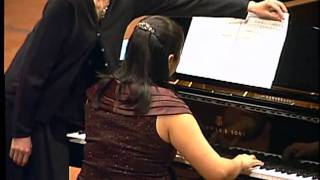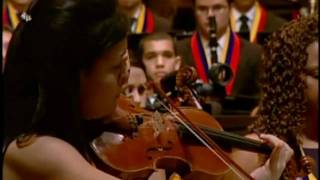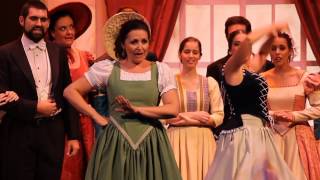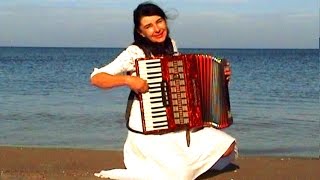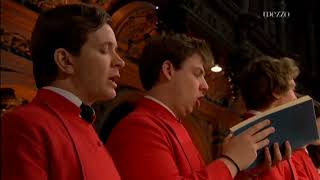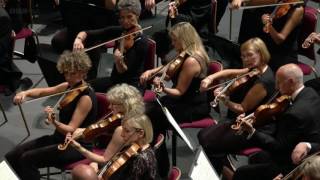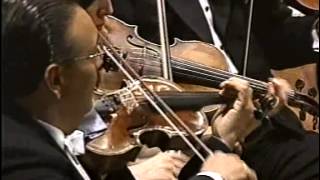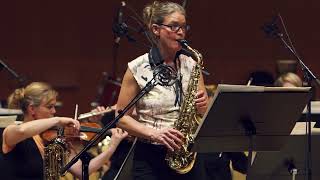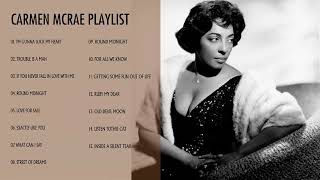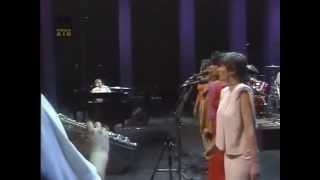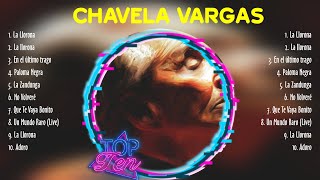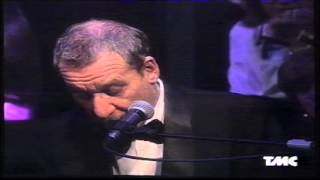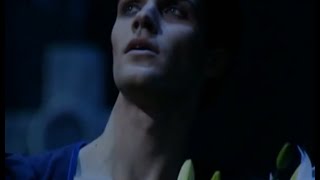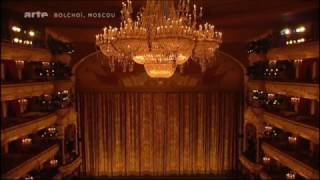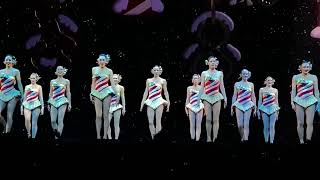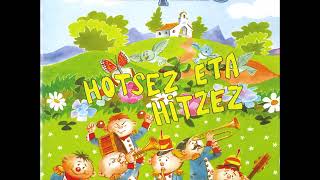Recommended music videos for initiation to classical music
Franz Joseph Haydn (1732-1809), Austrian composer whose brother Michael Haydn was also a notable composer, was one of the main pillars on which classicism was based (1750-1810). At the age of six he began his studies of harpsichord and violin. At the age of eight he was admitted as a chorister at St. Stephen's Cathedral in Vienna where he continued his musical studies. After losing his voice, he had to survive by working various jobs, while studying composition by analyzing the works of Carl Philipp Emanuel Bach . He maintained a close friendship with Mozart and was Beethoven 's teacher. He laid the main foundations of the sonata form and the formal structure of the string quartet and the symphony . He died at the age of 77 in Vienna .
The catalogue of Haydn's works . The works of Joseph Haydn are now classified according to the system devised by Anthony van Hoboken. Each work is identified by a Roman numeral corresponding to the category, which in most cases is identified by a genre. Some categories have subdivisions, which are indicated by a lower-case letter followed by an Arabic numeral corresponding to the order of the particular work within the category. These numerals are preceded by the word Hoboken (in memory of the author of the catalogue) and sometimes by Hob (his abbreviation).
Joseph Haydn ’s Piano Trio No. 39 in G major, Hob. XV/25 was written in 1795, during the final weeks of Haydn ’s second trip to London , and is one of a set of three (H. XV:24–26) dedicated to Rebecca Schroeter . Structured in three movements, it is perhaps his best-known piano trio and sometimes nicknamed the “Gypsy” trio or “Gypsy Rondo” because of its “Hungarian-style” rondo finale. Today the Mendelssohn Piano Trio gives us the Third Movement (Rondo all’Ongarese: Presto) of which Rosemary Hughes says “the final movement incorporates a number of Gypsy melodies, including the Hungarian recruiting dance genre known as Verbunkos , and Gypsy effects (such as strumming and pizzicato accompaniments for the left hand).”
Camille Saint-Saëns (1835-1921) was a French pianist, organist, composer and military man, committed to the French musical renewal, as well as to teaching; students such as Fauré and Messager passed through his classrooms. He was a precocious child who at the age of 11 made his first public appearance with works by Handel , Mozart and Beethoven . At the age of thirteen he enrolled in organ and composition at the Paris Conservatory and at eighteen, he composed his first symphony. He was a multifaceted intellectual: musician, writer, mathematician, philosopher, archaeologist, geologist, botanist ... Equally multifaceted were his numerous musical works (more than 400) in which he tackled all kinds of genres among which it is worth highlighting the novelty that film music represented at that time.
Catalogue of the works of Saint–Saëns . His works are classified by their Opus number (from the Latin opus 'work') which is a term used in music to catalogue the works of most composers. Since the 17th century , this form of cataloging began to be used every time a work was published, preceding the order number of the work with the word Opus , or its abbreviation Op .. Despite the above, there are many of our composer's works that are not properly classified.
The Dance Macabre (Danka makabre), opus 40, is a symphonic poem composed in 1874 by Saint-Saëns , inspired by a poem by Henri Cazalis recreating the ancient superstition of the Dance of Death ; it is the composer's most popular piece. The work, premiered in Paris on 24 January 1875, describes Death playing the violin at midnight. To his rhythm, skeletons dance around a tomb. At dawn, with the crowing of the rooster, the dead return to their graves.
Gustavo Dudamel (1981) is a Venezuelan conductor who trained within the System of Youth and Children's Orchestras of Venezuela , where he began at the age of four and where he completed his studies in violin, composition and conducting. Despite his youth, he has conducted the world's leading orchestras and is considered one of the most important conductors of today. He is currently the principal conductor of the Los Angeles Philharmonic Orchestra and the Simón Bolívar Symphony Orchestra . Today we see him leading one of the System's orchestras, the famous Teresa Carreño Youth Orchestra , performing Saint-Säens' Danse Macabre .
Francisco Alonso López (1887-1948) was a Spanish composer, born in Granada . His music is graceful, cheerful, with easy melody and a popular accent. He excelled in pasodobles and chotis , to which he gave grace and ease. Many of his works continue to be highly appreciated, such as the pasacalle Los nardos , the chotis El Pichi, both by Las Leandras, the chotis Tabaco y cerillas from the magazine Las de Villadiego or the song Maitetxu mía (both with lyrics by Emilio González del Castillo ). He also wrote two pasodobles for the festivals of the city of Alicante , " Les Fogueres de Sant Joan ", entitled La festa del poble , which premiered in 1934, and La Nit de San Joan , a pasodoble foguerer for band, choir and solo bass. He came to preside over the General Society of Authors of Spain .
La Calesera is a zarzuela in three acts, the second divided into two scenes, in prose and verse, with a libretto by the Madrid-born Emilio González del Castillo and Luis Martínez Román and music by the Granada-born Francisco Alonso . It premiered on 12 December 1925 at the Teatro de la Zarzuela in Madrid , with enormous success. It would later also premiere at the Apollo Theatre in Paris (1927), the Teatro San Luis in Lisbon and in theatres in several Latin American capitals. The libretto tells a love story set in romantic Madrid in the time of Luis Candelas , involving a love triangle: a comedian and singer called La Calesera and a marquise, pitted against each other by a heroic liberal.
The accordion is a wind musical instrument, consisting of a bellows, a fingerboard and two wooden sound boxes. The bellows are closed at both ends by wooden boxes. The right-hand side of the accordion also has a fingerboard with an arrangement of keys that can be like a piano ( piano accordion ) or round keys (also called buttons ); the left-hand side has buttons on both types of accordion to play the bass and accompaniment chords.
The most beautiful relaxing melody
1) (0´03´´)"La Paloma" - S.Yradier .-. 2) (6´25´´) "Bésame Mucho" - Valasgues/ Skyler .-. 3) (10´19´´) "Na Dancingu" "On Dancing" - folk /traditional .-. 4) (14´10´´) "Kurier Carski" "Czar's Courier" W. Cosma .-. 5) (17'03') "Biały Miś" "White Bear" - folk/traditional .-. 6) (20´38´´) "Terenia" "Theresa" - folk/traditional .-. 7) (24´ 33´´) "Ciemna była już noc" "Dark Night" - folk /traditional .-. 8) (26´37´´) "Barbara" - folk /traditional .-. 9) (28´35´´) La Paloma.
Today, accordionist Wiesława Dudkowiak offers us this collection of popular songs.
Recommended classical music videos
Georg Friedrich Händel ( 1685-1759) was born in Halle , Germany. He became a naturalised Englishman and is one of the greatest figures in the history of music , including the Baroque. His most notable musical work is the oratorio Messiah , one of the masterpieces of music history . As a child, he began to receive harmony and counterpoint lessons from Friedrich Zachow , organist in Halle , with whom he also learned to play the oboe, violin and organ. At the age of 18, he moved to Hamburg, where he wrote his first two operas. Three years later, he travelled to Florence and then to Rome . In 1710, he returned to Germany and from there to London , where he settled for life. Despite the total silence with which he protected his privacy, his homosexuality seems clear. He died at his home at the age of 74.
The catalogue of works by Georg Friedrich Händel , known by the acronym HWV , stands for Handel Werke Verzeichnis (in German, Catalogue of Handel's Works), is not arranged chronologically but thematically, by type of work or genre and according to its vocal or instrumental nature. It covers 612 works plus 25 supplements and doubtful and lost works, and was compiled between 1978 and 1986 in three volumes. The exact number of compositions is therefore difficult to specify. Its author is the musicologist Bernd Baselt .
Messiah is an English-language oratorio composed by George Friedrich Handel in 1741, to a biblical text collected by Charles Jennens . Its premiere was in Dublin on 13 April 1742 and was performed almost a year later in London . After an initial modest public reception, the oratorio gained popularity and eventually became one of the best-known and most frequently performed choral works in Western music. Handel switched to English-language oratorio in the 1730s in response to changing public taste; Messiah was his sixth work in this genre. While the other oratorios bear a marked Italian influence, the music of Messiah is rooted in older German passions and cantatas.
The three-part structure of the work approximates that of Handel 's three-act operas, with the "parts" subdivided by Jennens into "scenes." Each scene is a collection of individual numbers or "movements" that take the form of recitatives, arias, and choruses. PART I (0'15'') begins with the symphony/overture, after which the text draws on the prophecies of Isaiah and others, and moves on to the Annunciation to the Shepherds, the only scene taken from the Gospels . In PART II (56'42''), Handel concentrates on the Passion , ending with the " Hallelujah " chorus. PART III (1h 53'41'') covers the resurrection of the dead and the glorification of Christ in Heaven.
Ludwig van Beethoven (1770-1827) was one of the giants of Western music along with Bach and Mozart . Born on 16 December 1770 in Bonn , his father, of Flemish origin, tried to present him as a second Mozart , although it was a notable failure. Despite this, from the age of nine the organist Christian Gottlob Neefe captivated him with the study of Bach , whom he would always keep in mind. In 1787 he moved to Vienna with the intention of receiving classes from Mozart , but the death of his mother brought him back to Bonn a few days later. And so after five years, he returned to Vienna where he was able to study with Haydn and Salieri . However, his profession as an excellent pianist could not be realized due to the deafness that attacked him the following year, leaving him totally incapacitated in this faculty.
The catalogue of Beethoven's works . There are 138 musical works composed by Beethoven , arranged by numbers known as opus (Latin for "work") or its abbreviation op. , assigned by the composer's publishers during his lifetime. In addition, there are another 205 works that do not have opus numbers and that were published after the composer's death. These works were assigned WoO numbers (Werke ohne Opuszahl, "works without opus numbers"). This catalogue was first compiled by Georg Kinsky and Hans Halm (Das Werk Beethovens) in 1955.
Beethoven's Ninth Symphony is one of the most important musical compositions in history. The last movement caused astonishment in its time due to the incorporation of a vocal quartet of soloists and mixed choir, something unheard of at the time; a movement, moreover, that has become a symbol of freedom. In our days it has had countless arrangements and adaptations, from Miguel Ríos ' Ode to Joy until the arrangement of Herbert von Karajan to become the Anthem of the European Community ; the text used is a reduction of the Ode to Joy by the German poet Friedrich Schiller . The Symphony consists of four movements (I: 0´06´´.-. II: 14´50´´.-. III: 26´41´´.-. IV: 39´13´´) and its premiere took place in Vienna on 7 May 1824 with a resounding success with Beethoven present. On 12 January 2003 UNESCO declared the Symphony a World Heritage Site.
Today we are treated to the performance by soprano Erin Wall , mezzo-soprano Sonia Prina , tenor Simon O'Neill and bass Alexander Vinogradov with the CBSO Chorus , the BBC National Chorus of Wales and the BBC National Orchestra of Wales , all conducted by Chinese maestro Xian Zhang .
Pyotr Tchaikovsky (1840-1893) was a Russian composer who graduated from the St. Petersburg Conservatory and wrote works in various genres, although he achieved his greatest success with his ballets. In 1859 he obtained a position as a civil servant in the Ministry of Justice , which he would leave after three years in order to devote himself solely to music. His personal life was plagued by continuous crises after the death of his mother and by his repressed homosexuality, which forced him to enter into a marriage that only lasted a few months. He wrote more than 150 compositions, including piano works, quartets, suites, symphonies, concertos, chorals, cantatas, operas and ballets. He died at the age of 53 and is considered one of the greatest composers in history.
The Symphony No. 5 was composed between May and August 1888 and premiered in St. Petersburg on 6 November of that year under the baton of Tchaikovsky himself. The symphony consists of four movements: I (0´50´´) ANDANTE-SCHERZO: ALLEGRO CON ANIMA .-. II (16´55´´) ANDANTE CANTABILE-NON ALLEGRO-ANDANTE MAESTOSO .-. III (31´40´´) VALSE: ALLEGRO MODERATO CON PATRIOSO .-. IV (38´17´´) ANDANTE MAESTOSO - NON ALLEGRO - PRESTO FURIOSO - ALLEGRO MAESTOSO - ALLEGRO VIVACE - SCHERZO: ALLEGRO CON ANIMA. Although not based on a detailed programme, it continues in the vein of Symphony No. 4, also based on the “evil of the sad”, Fate . Listening to it captivates us with its underlying dynamism and melancholy.
Today's performance will be conducted by Susanna Pescetti , principal conductor of I Solisti di Napoli .
Niels Rosing-Schow (1954) is a Danish composer born in Copenhagen . He found his voice in France , having studied in Denmark . His sensuous and evocative music is rooted in his belief that “harmony and sonority are the same thing”, performed with a distinctly Danish lucidity and a broader Nordic loyalty to the patterns of nature. He studied at the University of Copenhagen and the Royal Danish Academy of Music , but it was on a scholarship to study in France that Rosing-Schow had his musical epiphany. Under the influence of Iannis Xenakis , he began to develop a spectral style in which instrumental timbre and colour would have as much structural importance as traditional harmony; more recently he has delved into the realms of space and imagination. He is currently a professor of composition at the Royal Danish Academy of Music . (Extracted from Andrew Mellor’s article published on WiseMusic in 2019)
Episodes from a Concerto is a version for soloist and chamber orchestra of my 2004 Saxophone Concerto for Large Orchestra , performed by Jeanette Balland and the Danish National Symphony Orchestra . This version is a recomposition of sections of the large orchestra version, which are adapted to a smaller format, hence the title Episodes from a Concerto .
The FIRST MOVEMENT (0´41´´) is written for the baritone saxophone, the lowest of the four main members of the saxophone family. Its wide range – from the deepest, rawest tones to the sonorous mids and tense highs – is fully expressed in music of energy and constant progress. But a couple of times along the way, it is as if everything “turns off”, while at other times, it picks up speed! In the SECOND MOVEMENT (8´22´´), the soloist switches to an alto saxophone. The movement is undulating, almost formless, characterized by fluid, microtonal melodies and timbres that alternate between light and dark. THE THIRD MOVEMENT (13´19´´), Interlock, is actually a kind of rondo, or rather a rhythmic double rondo. There are two repetitive, machine-like rhythmic patterns that interlock like gears. Towards the middle of the movement, time becomes elastic, the pace of the motor music slows down to slow motion and becomes finer: a lyrical moment briefly takes over the movement. At the end (CODA: 18´06´´), the soloist takes up the baritone saxophone again. ( Extracted from the commentary at the bottom of the video ).
Today we present the version offered by saxophonist Jeanette Balland accompanied by the Athelas Sinfonietta Copenhagen ensemble conducted by French maestro Jean Thorel .
Recommended music videos for all tastes
Carmen McRae (1922-1994) was an American jazz singer, songwriter, pianist and actress. Known by the nickname "Singer's Singers" , she was a contemporary of Ella Fitzgerald and Sarah Vaughan , and considered the virtual successor to Billie Holiday . She was one of the most important jazz singers and composers of the 20th century , recording 60 albums and a career that took her to Europe, South America and Japan . Although inspired by Billie Holiday , McRae created her own recognizable voice, and her ironic interpretations of song lyrics made her unforgettable. A heavy smoker, she was forced to retire in 1991 due to emphysema and died shortly after of a stroke. She was nominated for a seven-time Grammy Award .
Tom Jobim (1927-1994) was a Brazilian composer, arranger, singer, guitarist and pianist of bossa nova , popular music from his country and classical music. He is considered one of the greatest exponents of Brazilian music, and one of the great composers of popular music of the 20th century . He was the artist who internationalized bossa nova and, with the help of important American artists, fused it with jazz . Jobim 's musical roots are in classical music through Claude Debussy, Frédéric Chopin and Heitor Villa-Lobos . They are joined by Brazilian samba and folklore , cool jazz harmonies and Broadway musicals . Among his abundant production is the song " Girl from Ipanema ", one of the best-known Brazilian melodies in the world.
Chavela Vargas (1919 - 2012) was born in Costa Rica , in San Joaquín (province of Heredia ) and had a difficult childhood: her parents divorced and ignored her, leaving her in the care of her uncles. When she was 17, she moved to Mexico and later adopted its nationality; she ventured into ranchera songs with a peculiar style; with just a guitar and with her voice, emulating the way a drunk man sings. At 81 years old, in an interview for Colombian television in 2000, she expressed that she was a lesbian. In 2009, on the occasion of her 90th birthday, the Government of Mexico City named her Distinguished Citizen . Chavela Vargas is considered a leading and unique figure in ranchera music and all Latin American popular music.
Paolo Conte (1937) is an Italian musician and composer, a well-known singer-songwriter of variety music. Born in Asti ( Piedmont, Italy ), he began taking piano lessons as a child, with his brother Giorgio , four years younger. Graduated in Law (which is why he earned the nickname Avvocato ), he approached the world of jazz as a vibraphone enthusiast in some Asti groups. In the 1980s, he published several albums while touring Europe on various tours. Conte 's poetic world shows a disordered collage of clichés taken from cinema, the circus or cabaret, a dreamlike imaginary in a surrealist style, mixed with musical airs that rescue sounds from the blues , jazz music, tango , African or South American music ( rumba and salsa ) and a certain experimentalism.
Recommended peculiar videos
Giselle is a ballet in two acts with music by the French composer Adolphe Adam , choreography by Jules Perrot and Jean Coralli and libretto by Théophile Gautier and Jules-Henri Vernoy, based on the play De l'Allemagne (1835) by Heinrich Heine . Giselle is a peasant girl of great beauty and extreme innocence; deceived and betrayed, she falls into a despair that will drag her towards madness and death. Giselle is one of the masterpieces of ballet blanc , a ballet scene in which all the members of the corps de ballet appear dressed in white. Since the times of Romantic ballet, these ballet blanc scenes have been populated by ghosts, dryads, sylphs, fairies or similar creatures.
Today we present the complete ballet performed by Svetlana Zakharova and Roberto Bolle in their main roles accompanied by the Corps de Ballet of the Teatro alla Scala in Milan .
Bolshoi Reopening Gala After six years of pharaonic work, the theatre reopens its doors and offers this time an exceptional gala directed by Dmitri Tcherniakov . The great artists Plàcido Domingo, Natalie Dessay, Dmitri Hvorostovsky, Violeta Urmana as well as the stars, soloists and corps de ballet of the company parade across the stage to perform excerpts from lyrical and choreographic pieces that have made the place famous. The programme offers, among others : The Engagement in the Convent by Prokofiev , Prince Igor by Borodin, Iolanta and Swan Lake by Tchaikovsky, Don Quixote by Minkus ... (extracted from Télé Loisirs).
Radio City Music Hall is a theatre, considered the most important in the USA , located in Rockefeller Center in the middle of New York City . Opened in 1932, it has 5,931 seats for an additional 5,931 spectators. Since 1933 the Radio City Christmas show is regularly revived every year with five performances a day; a show starring mainly the Radio City Rockettes , which is an artistic troupe of dancers, Santa Claus and other artists. Other groups of Rockettes travel and perform throughout the nation during the Christmas days.
The Kohar Symphony Orchestra and Choir is based in Gyumri, Armenia, and was founded in 1997 by the patron of Armenian culture Harout Khatchadourian . Kohar 's first major concert tour took place in the summer of 2002, in Cyprus and Lebanon . In October 2005, it was Istanbul's turn, in the Lutfi Kirdar Concert Hall, with over 7000 Armenians and visiting audiences. On April 28–29, 2006, the Great Hall of the Moscow Kremlin witnessed unprecedented enthusiasm with almost 12,000 Armenian, Russian and foreign audiences. His largest concert with Stars of Armenia was presented at Liberty Square near the Opera House in the heart of Yerevan, Armenia , on May 28, 2011.
Today, Kohar has become a cornerstone for the Armenian diaspora, with the aim of reviving and promulgating Armenian culture and preserving its heritage for future generations at home and abroad.
Recommended music videos for children
Various Wikipedia articles have been used to write these texts.
The texts of Videomusicalis are written in Basque, Spanish and English.





